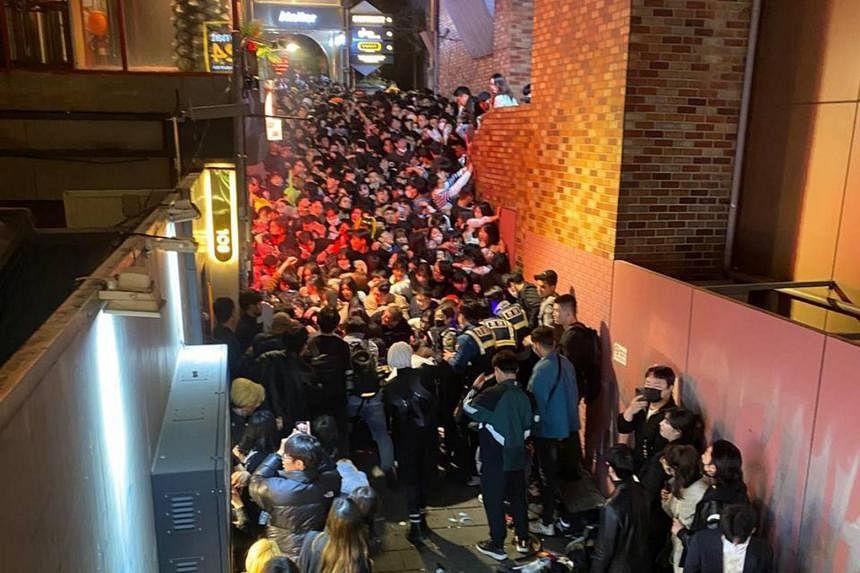News of the recent Halloween celebration and human stampede in Seoul, South Korea, that killed more than 150, immediately reminded me of a similar incident in Niigata, Japan, shortly after midnight, New Year’s Eve, 1956.
On that occasion 112 Japanese died and seventy-five were injured in a massive panic at a famous Shinto shrine just outside the port city of Niigata, about 270 miles northwest of Tokyo.
I was an army lieutenant at the time, station manager of an Armed Forces Radio station at a small American air base outside Niigata. A few months earlier my fiancée had flown to Japan and we were married there. Since no housing was available to us on the base, we found a family in Niigata (population then about 250,000) who were willing to rent us two rooms in their house—a Western style room on the first floor and a traditional Japanese room upstairs. It had shoji sliding doors (paper on a lattice frames) and the floor was covered with finely woven straw called tatami. We ate and slept on the floor.
On December 31, 1955 we stayed up until just before midnight and then placed our cozy futons on the tatami floor and got ready to greet 1956—quietly. Just before going to sleep a muffled sound came from different parts of the city—gong-like bells saying goodbye to the old year and welcoming the new one.
At that same time, unbeknown to us, just a few minutes outside the city, some 30,000 women, men and children had gathered on the grounds of one of Japan’s most beautiful Shinto shrines—Yahiko. It sits imposingly high, in a wooded forest, accessible by stairs, and it nestles against the base of a mountain bearing its name.
The crowd had gathered for a worship ceremony that included a tradition of priests throwing them special New Year’s rice cakes—mochi.
Following prayers, a Japanese journalist reported, the priests began throwing the rice cakes and those near the great altar “swarmed back down a stairway to catch the mochi, crashing into the arriving worshippers. Some stumbled off the staircase or were crushed under the oncoming human wave.”
A shrine official described “a pile of dead bodies and injured at the bottom of the stairs.”
Early reports from Seoul said that tragedy might have been avoided, or lessened significantly, if there had been a greater police presence on hand. More than six decades earlier, at Yahiko Shrine, only eleven police officers were present to control 30,000 revelers.
Ross Jones is a former vice president and secretary emeritus of The Johns Hopkins University. He joined the University in 1961 as assistant to President Milton S. Eisenhower. A 1953 Johns Hopkins graduate, he later earned a Master’s Degree at Columbia University’s Graduate School of Journalism.



Write a Letter to the Editor on this Article
We encourage readers to offer their point of view on this article by submitting the following form. Editing is sometimes necessary and is done at the discretion of the editorial staff.